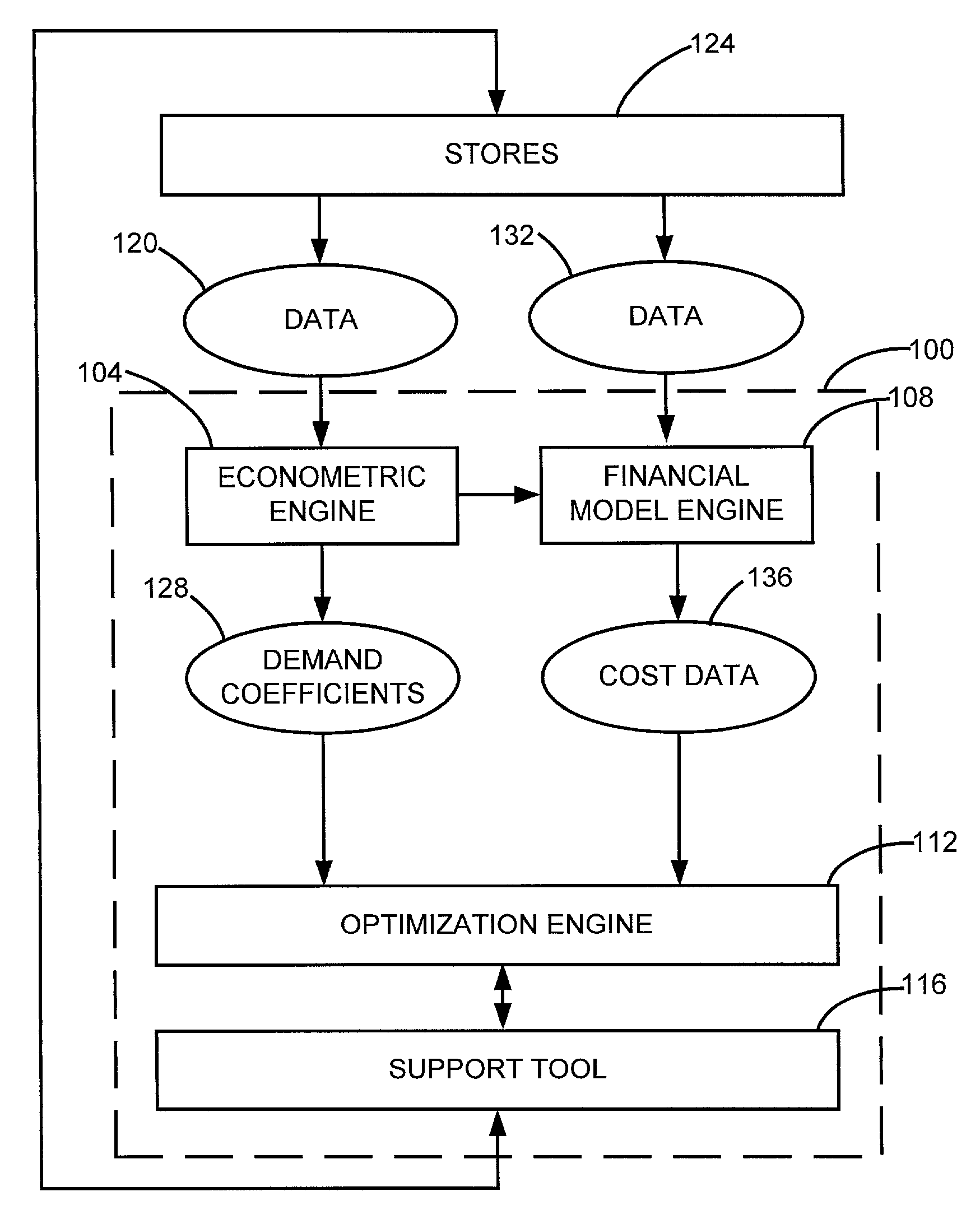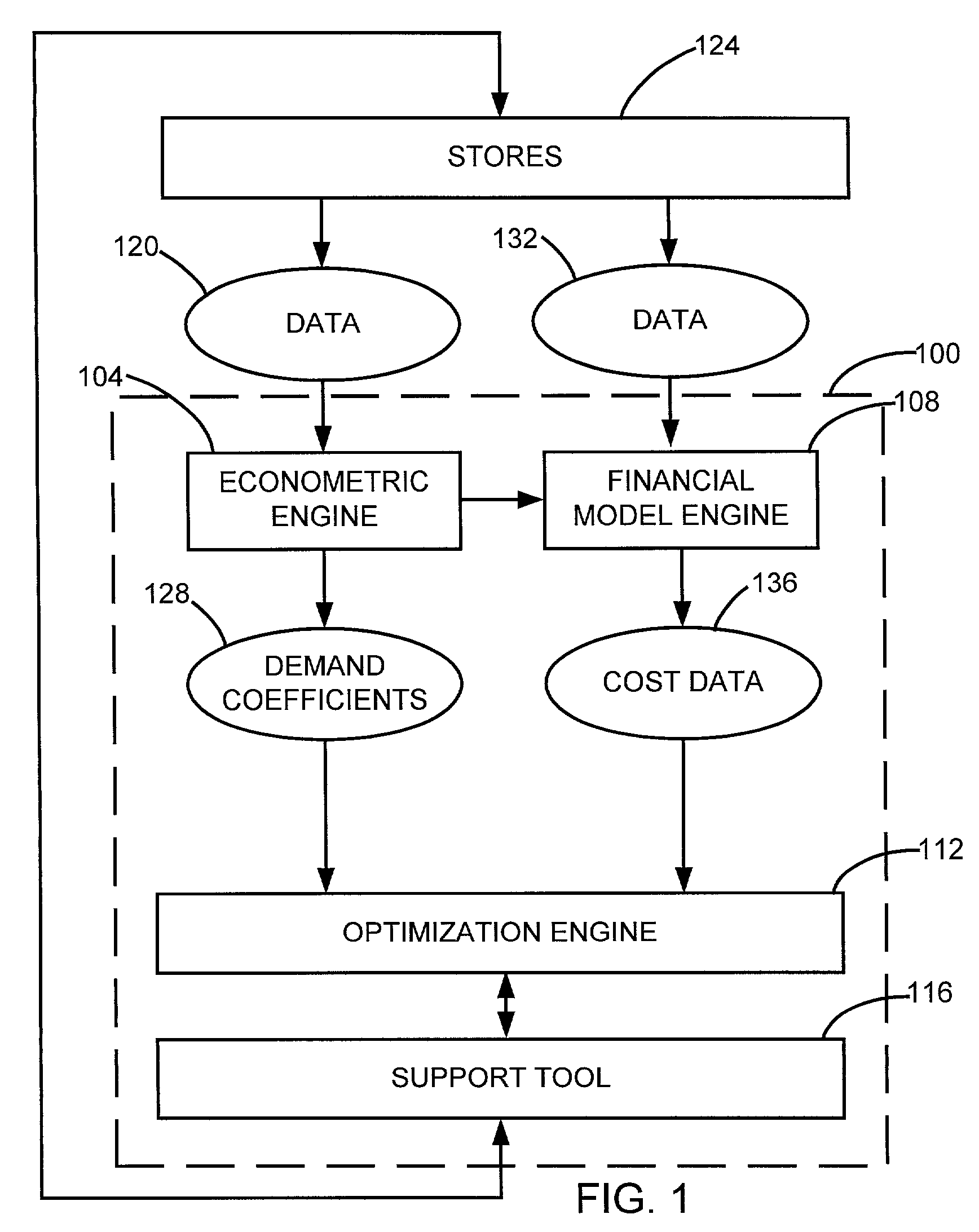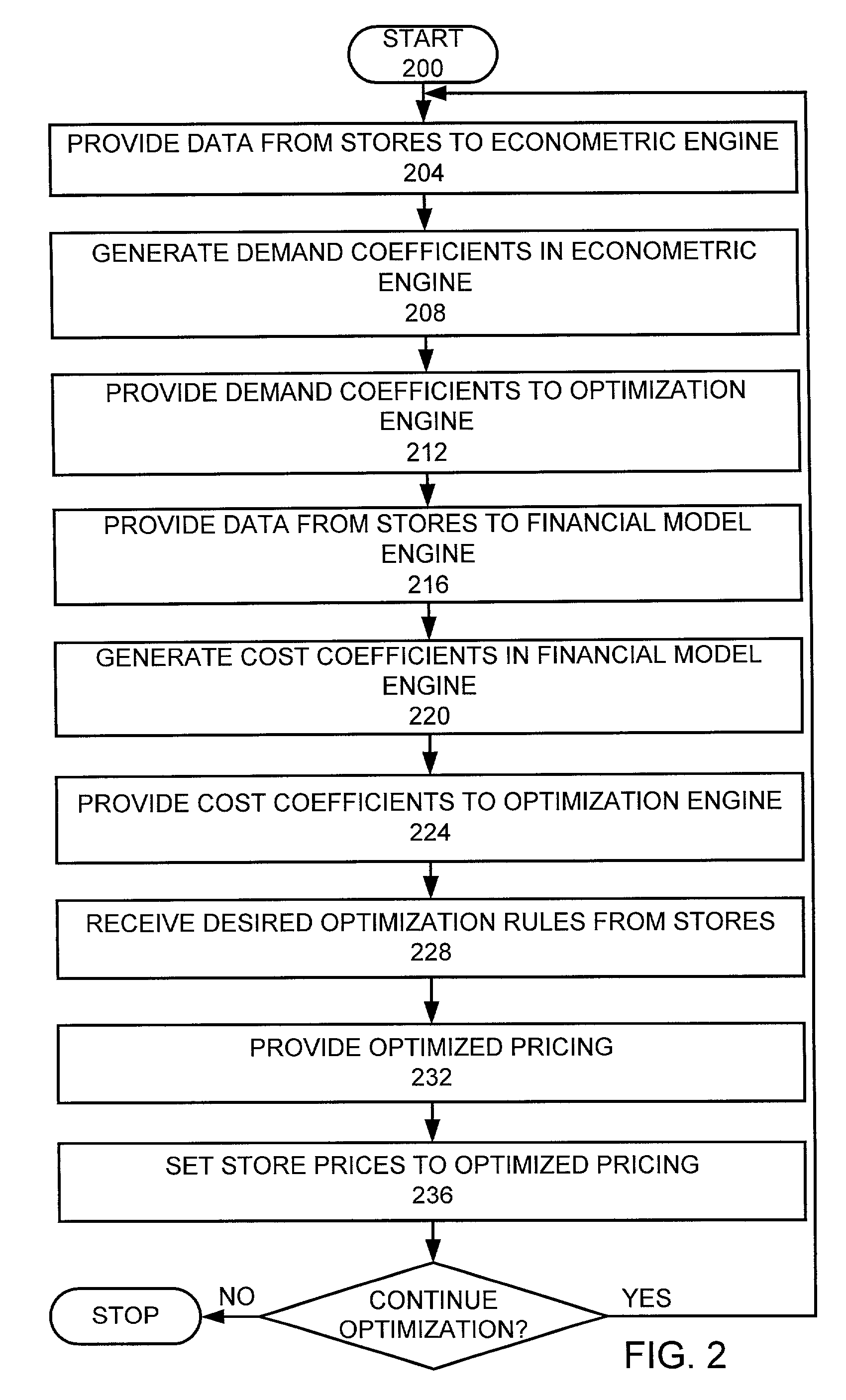Subset optimization system
a subset optimization and optimization system technology, applied in the field of subset optimization system, can solve the problems of difficult forecasting cost, difficult forecasting cost and forecasting demand function, and may be very complex, and achieve the effect of optimizing prices for a product category
- Summary
- Abstract
- Description
- Claims
- Application Information
AI Technical Summary
Benefits of technology
Problems solved by technology
Method used
Image
Examples
example
[0440]To provide an example of rule relaxation, six categories of rules are provided. According to the method illustrated in the flow chart of FIG. 21, the categories of rules are prioritized (step 2104) in the following order, with a ranking of 1 designating the category of rules with the highest priority and 6 designating the category of rules with the lowest priority.
[0441]1. Group price advance or decline rules. The user sets a maximum weighted group price advance or decline to 10%.
[0442]2. Size pricing rules. The user goes with the default that larger items cost less per equivalent unit than smaller identical items.
[0443]3. Brand pricing rules. For soft drinks, the user designates that the price of Brand A is never less than the price of Brand B. For juices the user designates that Brand C is always greater than Brand D.
[0444]4. Unit pricing rules. The user goes with the default that the overall price of larger items is greater than the overall price of smaller identical items....
PUM
 Login to View More
Login to View More Abstract
Description
Claims
Application Information
 Login to View More
Login to View More - R&D
- Intellectual Property
- Life Sciences
- Materials
- Tech Scout
- Unparalleled Data Quality
- Higher Quality Content
- 60% Fewer Hallucinations
Browse by: Latest US Patents, China's latest patents, Technical Efficacy Thesaurus, Application Domain, Technology Topic, Popular Technical Reports.
© 2025 PatSnap. All rights reserved.Legal|Privacy policy|Modern Slavery Act Transparency Statement|Sitemap|About US| Contact US: help@patsnap.com



